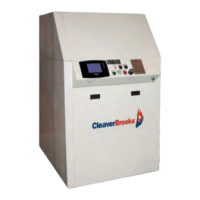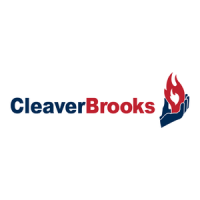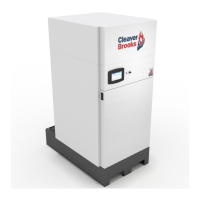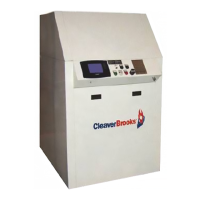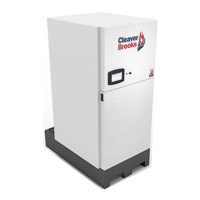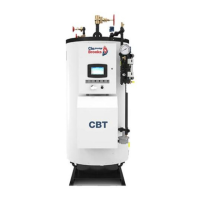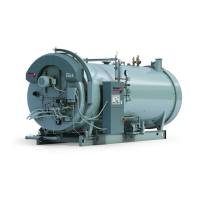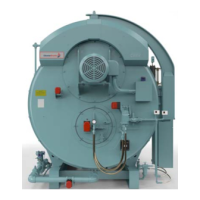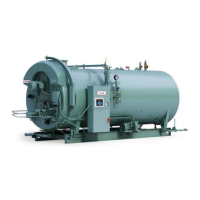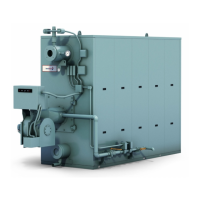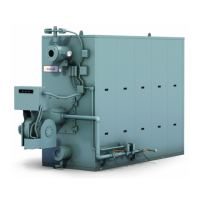35 750-265
Burner Control
The Burner Control uses the following Inputs/Outputs:
Inputs
All digital inputs will be conditioned to eliminate response to
spurious noise and transient events while preserving the
required response time of 6 line cycles or less.
FLAME
The flame signal will be the flame status after signal
conditioning, flame-on timing, and flame-off (FFRT) timing has
been performed. The control’s response to loss of flame and
the abnormal presence of flame will be defined by the
equipment setup.
LIMIT CONTROL INPUT (LCI) (J6-3)
The LCI typically includes all of the limits that cause a burner
to hold or recycle. For burner control sequences that use it, a
burner will not fire if the LCI input is off. If the LCI turns off
during a burner run cycle it will be treated as the end of the
demand.
INTERLOCK (ILK) (J5-1)
The ILK input typically includes all of the limits that cause a
burner to lock out if it turns off during a run cycle, must turn on
within some seconds after demand is present during purge,
and is ignored at other times. An example is an airflow switch.
The equipment setup will define the response to this signal.
INTERRUPTED AIR SWITCH (IAS) (J6-2)
The IAS input can be used to connect an airflow switch that
normally opens during the Run state at low modulation rates,
and thus cannot be in the interlock circuit. The equipment
setup will define the response to this signal.
PRE-IGNITION INTERLOCK (PII) (J6-5)
The Pre-ignition interlock typically includes a proof of closure
switch from the main valve. If it is on, then the valve is closed.
The PII is used in the commercial versions of the R7910A, but
is ignored by the Residential version. The equipment setup
will define the response to this signal.
HIGH FIRE PROVING SWITCH (HFS) (J7-2)
A control may use an HFS, such as during Prepurge to prove
that a damper is in the proper position or that airflow is
sufficient. The equipment setup will define the response to the
HFS signal.
LOW FIRE PROVING SWITCH (LFS) (J7-1)
A control may use an LFS, such as during ignition to prove
that a damper is in the proper position. The equipment setup
will define the response to the LFS signal.
STAT, REMOTE STAT, AND LCI AS DEMAND INPUTS (J8-3)
The presence of a demand may be configured to be the on
condition of the Stat input, a message from a Remote Stat, the
on condition of the LCI input, or may be driven by the sensor
status alone. The presence of demand may typically cause
pump turn-on as a primary effect, but will cause the burner
control to fire only if a demand signal is also received from the
Demand/Rate Selection subsystem, which is monitoring
temperature. If a demand signal is received then the burner
control will attempt to light the burner and if this succeeds,
release control to the modulation source. However if a hold
condition exists, then the burner control will remain in the hold
condition until that condition reverts to normal. The status of
the burner control will be reported in the Burner State and the
Burner Lockout/Hold status items. The equipment setup will
define the response to demand signals.
DEMAND
A burner control normally will respond to the demand signal
from the Demand/Rate Selection subsystem by attempting to
light the burner. With success of the purge and ignition
sequence, the burner control releases control to the
modulation source. However, if a hold condition exists, then
the burner control will remain in the hold condition until that
condition reverts to normal.
Outputs
MODULATION OVERRIDE
The burner control will control the modulation output when the
burner is off and during burner startup and shutdown by
driving the modulation rate directly, overriding the normal
source for modulation control, according to this table:
During The firing rate will be set to
Standb
y Lightoff rate
Prepurge Prepurge rate
Ignition (PFEP, MFEP,
DSI)
Lightoff rate
Run stabilization Lightoff rate
Postpurge Postpurge rate
Lockout Lightoff rate
